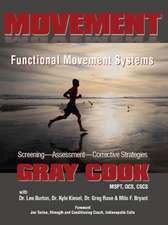Collaborative Medicine Case Studies: Evidence in Practice
Editat de Rodger Kessler, Dale Stafforden Limba Engleză Paperback – 29 oct 2010
| Toate formatele și edițiile | Preț | Express |
|---|---|---|
| Paperback (1) | 377.72 lei 6-8 săpt. | |
| Springer – 29 oct 2010 | 377.72 lei 6-8 săpt. | |
| Hardback (1) | 383.93 lei 6-8 săpt. | |
| Springer – 4 apr 2008 | 383.93 lei 6-8 săpt. |
Preț: 377.72 lei
Preț vechi: 397.59 lei
-5% Nou
Puncte Express: 567
Preț estimativ în valută:
72.29€ • 74.68$ • 60.16£
72.29€ • 74.68$ • 60.16£
Carte tipărită la comandă
Livrare economică 25 martie-08 aprilie
Preluare comenzi: 021 569.72.76
Specificații
ISBN-13: 9781441926418
ISBN-10: 1441926410
Pagini: 460
Ilustrații: XX, 440 p.
Dimensiuni: 155 x 235 x 24 mm
Greutate: 0.64 kg
Ediția:Softcover reprint of hardcover 1st ed. 2008
Editura: Springer
Colecția Springer
Locul publicării:New York, NY, United States
ISBN-10: 1441926410
Pagini: 460
Ilustrații: XX, 440 p.
Dimensiuni: 155 x 235 x 24 mm
Greutate: 0.64 kg
Ediția:Softcover reprint of hardcover 1st ed. 2008
Editura: Springer
Colecția Springer
Locul publicării:New York, NY, United States
Public țintă
Professional/practitionerCuprins
Background.- Primary Care Is the De Facto Mental Health System.- Organizing Collaborative Care in Medical Settings.- Planning Care in the Clinical, Operational, and Financial Worlds.- How I Learned About Integrated Care by Failing Miserably: The Deadly Sins of Integration.- Tailoring Collaborative Care to Fit the Need: Two Contrasting Case Studies.- Managing Chronic Pain Through Collaborative Care: Two Patients, Two Programs, Two Dramatically Different Outcomes.- Integrating Mental Health Services into Primary Care: The Hamilton FHT Mental Health Program.- Primary Care Life.- The Primary Care Behavioral Health Model: Applications to Prevention, Acute Care and Chronic Condition Management.- A Collaborative Approach to Somatization.- Improved Health Status and Decreased Utilization of an Anxious Phobic Man.- The Train Wreck: Assessment and Management of a Complex Medical Patient.- Collaborative Medical and Behavioral Health Treatment of Patients with Migraine Headache.- Collaborative Care for an Immigrant Couple.- Assessment and Management of Somatoform and Conversion Symptoms.- Women’s Health.- Chronic Pelvic Pain: A Case for an Interdisciplinary Evaluation and Treatment Approach.- Biobehavioral Management of Hot Flashes in a 48-Year-Old Breast Cancer Survivor.- Preserving a Life and a Career: How a Partnership Between Medicine and Psychology Saved a Physician with Anorexia Nervosa.- Collaborative Care to Heal Gender Relations Across Generations: A Couple of Trainees Watch a Couple of Experts Treat a Couple of Couples.- Specialty Mental Health Care to Medical Patients.- The Complex Orofacial Pain Patient: A Case for Collaboration Between the Orofacial Pain Dentist and the Clinical Health Psychologist.- Integrated Care in a Cardiac Rehabilitation Program: Benefits andChallenges.- Collaborative Treatment in Behavioral Medicine: Treatment of a Young Single Mother with Psoriasis and Generalized Anxiety Disorder.- Hypnotic Amplification–Attenuation Technique for Tinnitus Management.- Chronic Medical Illness.- An Integrative Approach to Treating Obesity and Comorbid Medical Disorders.- A Case of Medically Unexplained Chronic Cough.- Walking the Tightrope Without a Net: Integrated Care for the Patient with Diabetes, Cardiovascular Disease, and Bipolar Disorder…and No Insurance.- Healing Through Relationships: The Impact of Collaborative Care on a Patient with Spina Bifida.- Psychiatric and Comorbid Disorders in Primary Care.- Overcoming Depression in a Strange Land: A Hmong Woman’s Journey in the World of Western Medicine.- Seven Years in a Young Man’s Life: Collaborative Care in Rural Vermont.- Bringing the Family into Focus: Collaborative Inpatient Psychiatric Care.- Pain.- Complexity and Collaboration.- A Bad Situation Made Worse.- Innovations in the Treatment of Comorbid Persistent Pain and Posttraumatic Stress Disorder.- What Goes Up Must Come Down: The Complexity of Managing Chronic Pain and Bipolar Disorder.- Pediatric Burns: They Are Not Always What They Appear.- A Man with Chronic Back Pain and Panic Attacks: A Collaborative Multisystem Intervention.- Conclusion.- Summary.
Recenzii
From the reviews:
"The book is organized into nine parts. … This book contains 36 chapters. … This book can influence medical school training, health care management, primary care practice, and health care funding." (Mary Ann Cook, PsycCRITIQUES, Vol. 54 (1), January, 2009)
"The book is organized into nine parts. … This book contains 36 chapters. … This book can influence medical school training, health care management, primary care practice, and health care funding." (Mary Ann Cook, PsycCRITIQUES, Vol. 54 (1), January, 2009)
Notă biografică
Rodger Kessler is a clinical psychologist who has been doing research in the area of integration of primary health care and mental health care for the past 15 years. Dr. Kessler created a five site medical practice where behavioral health clinicians can deliver evidence-based, integrated medical psychological care. Dr. Kessler’s current research focuses on patient compliance with psychological referral in an integrated practice, and the impact of integrated medical psychological care on medical and cost outcomes. He is a Fellow of the American Psychological Association and a Past President of the Vermont Psychological Association.
Textul de pe ultima copertă
Collaborative Medicine Case Studies
Evidence in Practice
Edited by Rodger Kessler and Dale Stafford, Berlin Family Health, Montpelier, Vermont and Department of Family Medicine University of Vermont College of Medicine
Just as the mind and body collaborate in maintaining one’s health, collaboration between primary and behavioral health care can bring patients more efficacious treatment and better long-term results, from better compliance with or less dependence on medication to more effective use of health care services.
Collaborative Medicine Case Studies shows physicians and mental health practitioners working together across a variety of settings to assess and treat entrenched illnesses, combined physical and psychological conditions (back pain/panic attacks, diabetes/bipolar disorder), and cases that defy straightforward diagnosis. At the same time, the cases reflect the economic and financial realities of contemporary health care.
The cases discussed generate creative solutions using different levels of collaboration depending on patient need and site variables, but all share important similarities: close communication, careful follow-up by physician and behavioral health collaborators, and patients who would not have been treated as effectively without collaborative care. Blending research evidence, clinical insight, welcome humor, and realistic optimism, these cases demonstrate impressive successes, instructive setbacks, and comparative viewpoints while shedding light on the logistical, financial, and training challenges of integrative practice.
A sampling of the three dozen cases:
Evidence in Practice
Edited by Rodger Kessler and Dale Stafford, Berlin Family Health, Montpelier, Vermont and Department of Family Medicine University of Vermont College of Medicine
Just as the mind and body collaborate in maintaining one’s health, collaboration between primary and behavioral health care can bring patients more efficacious treatment and better long-term results, from better compliance with or less dependence on medication to more effective use of health care services.
Collaborative Medicine Case Studies shows physicians and mental health practitioners working together across a variety of settings to assess and treat entrenched illnesses, combined physical and psychological conditions (back pain/panic attacks, diabetes/bipolar disorder), and cases that defy straightforward diagnosis. At the same time, the cases reflect the economic and financial realities of contemporary health care.
The cases discussed generate creative solutions using different levels of collaboration depending on patient need and site variables, but all share important similarities: close communication, careful follow-up by physician and behavioral health collaborators, and patients who would not have been treated as effectively without collaborative care. Blending research evidence, clinical insight, welcome humor, and realistic optimism, these cases demonstrate impressive successes, instructive setbacks, and comparative viewpoints while shedding light on the logistical, financial, and training challenges of integrative practice.
A sampling of the three dozen cases:
- The head and the brain: migraines, orofacial pain, tinnitus.
- Comorbid PTSD and persistent pain.
- Individuals and couples with complex medical/emotional problems.
- Chronicillnesses: obesity, spina bifida, cardiovascular disease.
- A Hmong woman’s post-immigration depression.
- A physician with anorexia
- Burn patients who keep coming back without treatment success.
Caracteristici
Practical and applied—discusses economic and administrative issues alongside evidence-based clinical issues In-depth case studies, co-written by psychologists and physicians Includes supplementary material: sn.pub/extras











